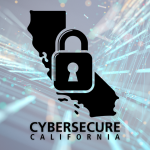Think phishing is your biggest email threat?
Think again.
While most small businesses worry about spam or malware, the real danger is Business Email Compromise (BEC) — a sophisticated scam that cost U.S. businesses over $2.4 billion in 2021 alone, according to the FBI’s Internet Crime Complaint Center (IC3).
And here’s the part most small business owners miss:
BEC doesn’t rely on malware. It relies on trust.
Which makes it harder to detect — and far more dangerous.
Let’s break down what BEC is, how it works, and how to stop it before your business loses tens or hundreds of thousands of dollars.
🕵️ What Is Business Email Compromise (BEC)?
BEC is a form of cybercrime where scammers impersonate an executive, employee, or vendor via email to trick businesses into sending money or sensitive data.
It typically involves:
- Compromised or spoofed email accounts
- Social engineering and urgency tactics
- Fake invoices, wire transfers, or payment changes
The attacks are stealthy, professional, and highly personalized — which is why they succeed.
💸 Real-World Examples
📥 Invoice Fraud
A scammer poses as one of your trusted vendors and emails your accounting team a “new” invoice with “updated” bank details. The employee processes the payment — and just like that, $75,000 is gone.
🧑💼 CEO Fraud
An attacker compromises your CEO’s email or fakes it convincingly. The finance manager gets an urgent message:
“I’m traveling — please wire $12,000 to this account right away for a client deal.”
Without question, the transfer goes through.
🛍 Vendor Impersonation
A vendor you work with regularly gets hacked. Their real email sends you an invoice — but the bank info has been quietly changed. You trust the email, pay it, and don’t find out for weeks that the vendor never got the money.
⚠️ Why It Works So Well
- No malware or suspicious links to get flagged by antivirus
- Exploits human trust and urgency
- Emails come from real people (or look like it)
- Victims don’t know they were scammed until the money is gone
And yes — small and midsize businesses are the top targets, because they often lack strict payment controls or cybersecurity training.
🔒 How to Protect Your Business from BEC
Here’s how to shut the door on BEC before it drains your business account:
✅ 1. Require Multi-Factor Authentication (MFA) on Email
If a scammer steals a password, MFA prevents them from logging in. It’s your first and best line of defense.
✅ 2. Train Staff to Spot Red Flags
Teach employees to question:
- Last-minute changes in payment instructions
- Unusual tone or urgency in emails
- Requests to not call or confirm something by phone
- Emails that seem “off” even if the sender is known
Make “trust but verify” your official policy.
✅ 3. Always Verify Payment Requests
Before transferring money or changing payment info:
- Call the person or vendor directly using a known phone number
- Never rely solely on email for financial approvals
- Set up dual-approval for wire transfers or large payments
✅ 4. Lock Down Your Email Environment
- Use email authentication protocols (SPF, DKIM, DMARC)
- Implement email filtering and impersonation detection tools
- Monitor for logins from unknown IPs or countries
✅ 5. Use Role-Based Access Controls
Limit who can authorize payments, see financial data, or access executive emails. The fewer people with access, the smaller your attack surface.
🧯 What to Do If You Suspect a BEC Attack
If you think you’ve fallen victim to BEC:
- Immediately contact your bank — they may be able to freeze the transaction
- Report the incident to the FBI’s IC3 at www.ic3.gov
- Start an internal investigation — look for how access was gained
- Notify any affected vendors, clients, or partners
💡 The Bottom Line
Business Email Compromise isn’t a “big business” problem anymore.
It’s a smart, targeted threat aimed right at California’s small and midsize businesses — where trust, speed, and lean operations leave room for exploitation.
🛡 How Cybersecure California and Synergy Computing Can Help
We raise the alarm.
Synergy Computing helps you take action.
- Implement MFA, email security, and threat detection
- Train your team to recognize and report suspicious emails
- Review your wire transfer and payment approval processes
- Harden your Microsoft 365 or Google Workspace environment
- Run internal phishing simulations to test readiness
📅 Don’t Let Your Business Become the Next Victim
Schedule your Free Email Security & Payment Risk Assessment today.
👉 Click here to book your free consultation
Or call 805-967-8744 to talk with a cybersecurity expert who knows how to protect California’s business community.
BEC doesn’t use tricks. It uses trust.
Let’s make sure your team is prepared.
📥 Want a Quick Way to Protect Your Business from BEC Scams?
Download our Business Email Compromise (BEC) Prevention Checklist — a practical, one-page guide to help you stop invoice fraud, impersonation scams, and unauthorized transfers before they happen.
👉 Click here to download the checklist (PDF)
Perfect for finance teams, executives, and small business owners.

